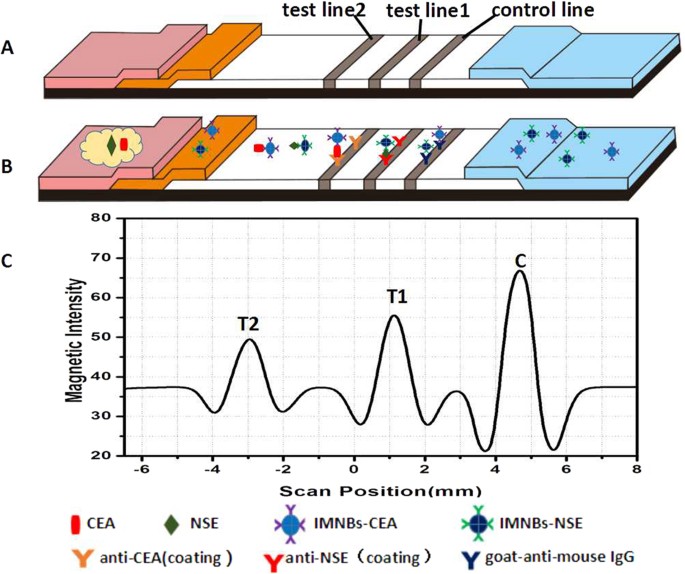- Select a language for the TTS:
- UK English Female
- UK English Male
- US English Female
- US English Male
- Australian Female
- Australian Male
- Language selected: (auto detect) - EN
Play all audios:
Welcome to the second part in this three-part series! To reiterate from Part 1: There are long-persisting myths when it comes to U.S. public education funding — namely, that 1) more money in
schools won’t matter, 2) we already spend too much on public education as it is, and 3) additional resources for schools don’t exist anyway. Last Thursday, I dissected the false claims that
more money in schools simply won’t matter. Today, let’s explore the misguided argument that I feel like I heard come up time and time again in the 1990s and 2000s in particular, and that
very much persists to this day — that we already spend too much on public education as it is. THE ROI ARGUMENT: ‘WE CONTINUE TO SPEND TONS ON PUBLIC EDUCATION AND WE’RE NOT GETTING ENOUGH IN
RETURN’ I mentioned in the last post that politicians on both sides of the aisle will make this claim when it comes time to justify cutting or tamping down school funding, declaring that
it’s really only worth focusing on _how_ money is spent, not _how much_ money is available to schools (an idea that, with the assistance of Bruce Baker and his excellent 2018 book _Education
Inequality and School Finance_, we dismantled in the previous post). I believe that this argument was ringing in my ears especially loudly in the 1990s because of the surging popularity in
applying more of a ‘free-market approach’ to public spending in general, and in the late 2000s and into the 2010s in the midst of significant state spending cuts during the Great Recession.
The argument goes: All of these dollars are going to public schools, and the ROI — return on investment — isn’t good enough for the high amounts we’re spending year over year. The spending
is therefore horribly inefficient, and cutting spending can thereby make our public education system that much more efficient. As Americans, most of us want to up our efficiency games in
various aspects of our lives — so the idea that public education just needs to trim the fat and become a more well-oiled machine can be a tempting one. And without a doubt, the U.S. public
education system can be more efficient, as all of our public (and private) systems can be. THE ONLY PROBLEM IS: THERE’S NO EVIDENCE THAT CUTTING MUCH-NEEDED SCHOOL EXPENDITURES—MONEY FOR
HIRING AND SUPPORTING TEACHERS AND SCHOOL STAFF, AND FOR CRITICAL RESOURCES FOR STUDENTS LIKE MODERNIZED FACILITIES, UPDATED BOOKS AND TECHNOLOGY, AND MORE — IMPROVES EDUCATIONAL AND LIFE
OUTCOMES FOR STUDENTS, WHILE THERE _IS_ CLEAR EVIDENCE THAT CUTS CAUSE REAL HARM TO SCHOOLS AND FAMILIES. Perhaps one of the most infamous and irresponsible examples of this was Kansas
Governor Sam Brownback’s massive income tax cut during the mid-2010s, which gutted school budgets and widened income inequality in the state. If you’re not familiar with this debacle, I
invite to read more about it here. So, let’s dig into the ROI argument a bit more by addressing two key questions: whether or not the U.S. does spend an inordinate amount on public education
as a country (as is so often implied or stated outright), and whether or not we should expect to get more in return for what’s already being spent. DOES THE U.S. SPEND AN INORDINATE AMOUNT
ON PUBLIC SCHOOLING? Simply put: No, the U.S. doesn’t. Those making the ROI argument are very often pointing to raw dollars and asking us to marvel at the seemingly high amounts they’re
citing, while providing zero context. Here’s some context from the National Center for Education Statistics (NCES), the main federal entity that collects and analyzes educational data: The
U.S. spent 3.6 percent of its GDP on elementary and secondary schools in 2017, just about on par with the average of all OECD countries (3.5 percent). Over a quarter of OECD countries spent
at least 4 percent of their GDP on elementary and secondary schools, with Israel and Norway both spending nearly 5 percent. (It’s worth noting that this is looking at the U.S. as a whole; as
discussed in this post, spending differs significantly between the states and between districts within states.) Additionally, on pages 9–11 of his book, Baker points out that when overall
U.S. public school spending is adjusted for labor costs (i.e., compensation levels for teachers and school staff per the market), the U.S.’s per-pupil spending “hasn’t risen for a decade and
has barely risen for over two decades (2.5 percent).” This means that spending overall has been largely stagnant coming out of the Great Recession, and certainly hasn’t been rocketing
sky-high in any real terms, as those looking at raw dollars alone are often quick to claim. Moreover, the vast majority of school spending (about 80 percent, according to Baker) goes towards
compensation for teachers and school staff, and we’re all too aware that U.S. educators are chronically underpaid. Baker notes on pages 12–14 of his book that, for the past decade and a
half, teacher wages “have held constant at about 77 percent of nonteacher wages.” Even when growing pension benefits are taken into account, Baker says that, at best, that would increase
teacher wages to “84 percent of nonteacher wages in 2015.” IF WE CAN’T PAY OUR TEACHERS A COMPETITIVE LIVING WAGE — WHICH IS WHAT MOST SCHOOL SPENDING GOES TOWARDS — THERE’S NO WAY THAT
ANYONE CAN LEGITIMATELY CLAIM, IN MY MIND, THAT WE SPEND TOO MUCH ON PUBLIC EDUCATION AS A COUNTRY. SHOULD WE EXPECT MORE IN RETURN FOR WHAT’S ALREADY BEING SPENT? This becomes an odd
question when we know that U.S. teachers are chronically underpaid and public schools are chronically underfunded — SO WHY SHOULD WE, THE AMERICAN PUBLIC, THEN BE EXPECTING MORE FROM LESS?
There’s an inherently racist assumption at play here that chronically underserved school districts in particular, which serve predominantly Black, brown, and low-income students, just aren’t
stepping up and finding ways to better serve families and kids — in other words, that it’s not a matter of resources, but rather a matter of chosen inefficiency and/or unchosen incompetence
— that the bootstraps are not being pulled up high enough. While, again, every school district — and every public service, for that matter — could be working in more efficient and effective
ways, this assumption frankly reeks of paternalism and White supremacy ideology — and it’s, of course, a mindset that’s not unique to the public education sector in the U.S. The other
question here is: In terms of ‘expecting more in return’, what are the actual outcomes that we wish to see? The U.S. needs to do a more rigorous and thorough job of assessing a variety of
educational and life outcomes over the long term, and not just standardized test scores. And when we do take a moment to look at the data available from standardized test scores, we see that
there has been growth in reading and mathematics among 9-year-olds and 13-year-olds since the 1970s, mixed with more level scores among 17-year-olds in that time, using data from the
National Assessment of Educational Progress or NAEP, often referred to as The Nation’s Report Card. Additionally, looking at 2015 scores from the Programme for International Student
Assessment or PISA, scores among U.S. 15-year-olds are close to the OECD country average in science and reading, and well below average in mathematics. (Interestingly, in the much
higher-spending state of Massachusetts, scores among 15-year-olds are above the U.S. and OECD averages in mathematics, and are well above average in both science and reading, comparable with
the highest-performing countries in the world. While correlation does not equal causation, it serves as a reminder that, perhaps, if we’re to consider pursuing similarly high outcomes
throughout the U.S., we should, at the very least, examine the role that reversing our chronic underinvestment in public K-12 schools would play.) There is understandable frustration about
the progress of U.S. students’ test scores, but IF THE U.S. OVERALL IS GOING TO MAKE A CONCERTED EFFORT TO IMPROVE STUDENT ACHIEVEMENT, IT IS GOING TO TAKE CORRESPONDING RESOURCES. Remember
how, in this post, I discussed that states generally are not basing their school funding formulas on the projected costs to achieve certain outcomes. Additionally, on pages 119–120 of his
book, Baker cites a rigorous 2005 cost study that found that, in the state of New York, spending needs to be about 2.5 times higher per low-income student to achieve the same outcome
measures as non-low-income students. This is in a society (the U.S., I mean, not just New York) where income & wealth gaps have been widening over the past few decades. There’s therefore
an argument to be made here that it’s impressive that our test scores are what they are in recent history, and that perhaps our public schools overall have in fact become _more_ efficient,
not less, out of necessity — like the Oakland Athletics were unfairly compelled to become in Baker’s _Moneyball_ analogy (from the prior post). WE — THE AMERICAN PUBLIC, AND POLICYMAKERS —
NEED TO THINK ABOUT PUBLIC SCHOOL SPENDING IN A DIFFERENT LIGHT, NOT AS SOME CRAZILY INEFFICIENT BURDEN ON TAXPAYERS (BECAUSE IT’S NOT THAT), BUT INSTEAD AS A TRUE INVESTMENT IN THE LIVES OF
OUR EDUCATORS AND OUR CHILDREN, AND IN THE HEALTH OF OUR SOCIETY. Throughout the _How Schools Use Money_ chapter of his book, Baker demonstrates how, when schools have more financial
resources at their disposal, they do in fact tend to invest these resources “in more staff and better pay for the staff.” Thank goodness, because it’s the relationships that educators build
with their students, over the course of a single year and over multiple years, that lie at the very heart & soul of a quality education. And as we as a society continue to expect more of
public schooling into the future — to prepare an informed citizenry to be able to effectively combat voting rights suppression, climate change (due to our historical negligence), and much
more—having those robust relationships in our schools will become even more vital, and it will cost _more_ money, not less, to ensure that the human capital (i.e. educators) and supporting
physical capital (i.e. buildings, books, technology, etc.) are properly in place. For all of our health and sanity, there shouldn’t be excuses for not providing these resources, and we
shouldn’t fear such investments — ON THE CONTRARY, WE OUGHT TO ENTHUSIASTICALLY EMBRACE AND THEN CELEBRATE THEM. PER PUPIL WOULD THEREFORE DO EVERYTHING IN ITS POWER, IN PARTNERSHIP WITH
DIRECT-SERVICE AND ADVOCACY ORGANIZATIONS, TO PLACE THIS SPENDING IN A NEW LIGHT FOR THE PUBLIC AND POLICYMAKERS — VIA CREATIVE ADVERTISING, MOBILIZING ALLIES & ACTIVISTS TO ACTION, AND
MUCH MORE. NEXT UP For the final post in this series: Let’s say that more policymakers agree, in theory, that it would be beneficial to close school funding gaps and increase the annual U.S.
investment in public education. Terrific, but the problem is: too many would then surely claim — and too many lawmakers and supposed experts have in fact been claiming this for years
already — that the additional financial resources just don’t exist out there to provide to schools anyway. Next time, I’ll dig into how that claim is, to put it kindly, absolute B.S.,
hogwash, malarkey — whatever fun term for a big ol’ stinking myth that you’d like to use here. See you then!










